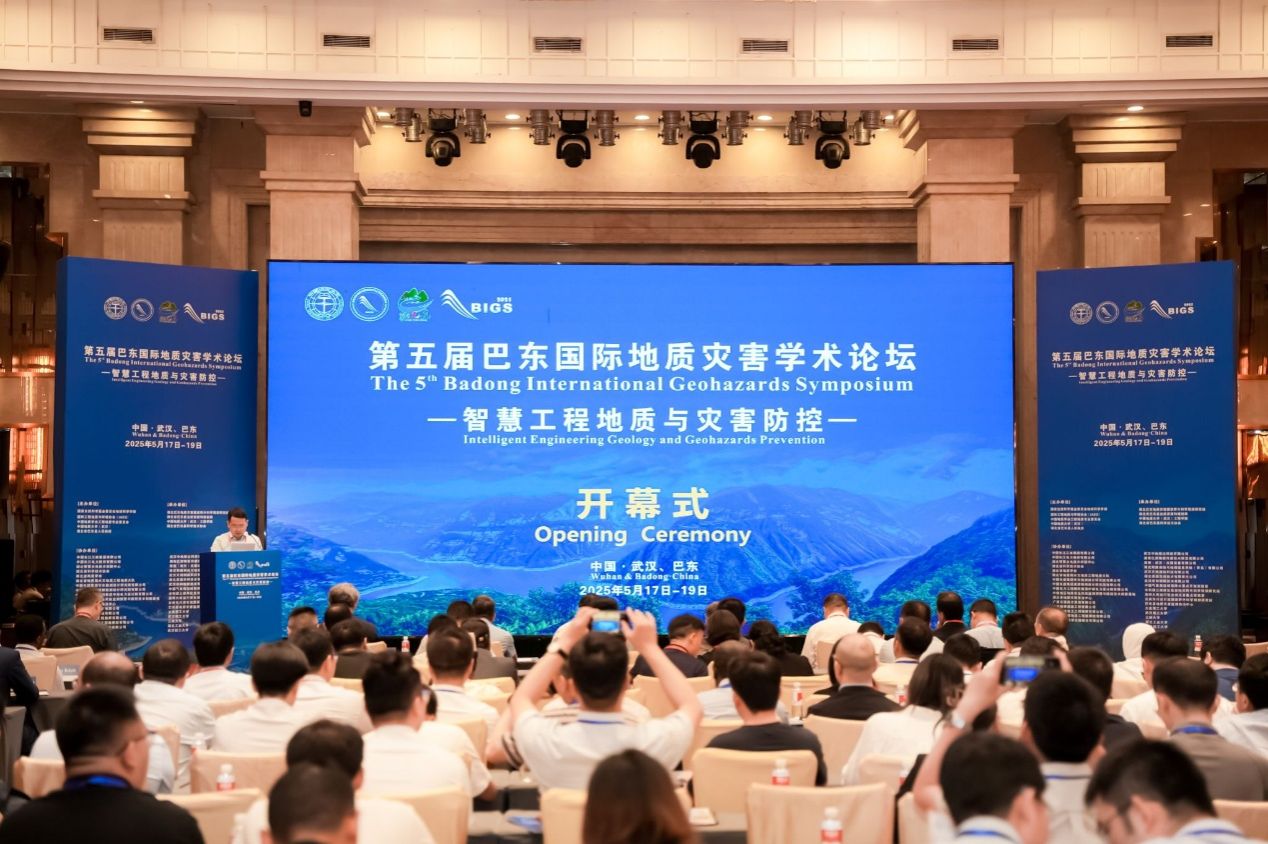
Over 400 experts and scholars from 116 universities and institutions across 14 countries and regions gathered in Wuhan and Badong, Hubei Province, from May 16th to 19th for the 5th Badong International Geohazards Symposium. The symposium centered on the theme “Intelligent Engineering Geology and Geohazards Prevention”.
ZHANG Junfeng, Vice President of CUG, delivered the opening address. He highlighted the symposium’s evolution over eight years into a vital international platform for exchange in geohazard research. He showcased CUG’s long-term practices and innovative achievements in Badong’s geohazard prevention, expressing hope that the symposium would foster greater technical synergy and global cooperation.
CHEN Junyun, a senior official from the Hubei Provincial Department of Science and Technology, stressed the critical role of technological innovation in intelligent engineering geology and hazard control for enhancing natural disaster resilience. He noted this shift represents the essential transition from traditional, experience-based methods towards intelligent, scientific approaches demanded by the times.
HUANG Bo, Secretary of the Badong County Committee, presented the county’s practical achievements. He detailed how Badong’s “four-in-one” integrated system has achieved zero casualties from geological hazards for 20 consecutive years. A flagship success is the transformation of the ancient Huangtupo landslide mass into China’s first National 4-Star Geological Culture Park, recognized as a model of scientific management and ecological restoration. HUANG expressed hope that the symposium would help share the “Badong Experience” more broadly for global disaster mitigation.
Symposium Chair TANG Huiming, Chief Professor of Geological Engineering at CUG, outlined the event’s structure, “The symposium combined academic exchange, technical training, a graduate poster competition, fieldwork, and public science outreach. We aim to use this gathering to accelerate integrated innovation and the translation of research into practical solutions in geohazard prevention.”
Technical sessions featured specialized software like Massflow (for simulating surface disaster dynamics, developed by the CAS Institute of Mountain Hazards and Environment) and FssiCAS (for marine geo-engineering simulation, developed by the Southern Marine Science and Engineering Guangdong Laboratory).
The core academic program featured 14 keynote lectures, 31 invited talks, 78 parallel session presentations, and 17 graduate student forum reports, organized across 6 parallel sessions. Key discussion topics included: mechanisms of geohazard evolution; engineering properties and changes in rock and soil masses; early identification, monitoring, and early warning systems; risk assessment and engineering protection; field scientific observation and engineering practices; active faults and induced seismic hazards. Discussions emphasized the impact of global change and strategies for managing reservoir-induced geological hazards, pooling expertise to advance scientific observation and control.

(Edited and translated from the Chinese version)